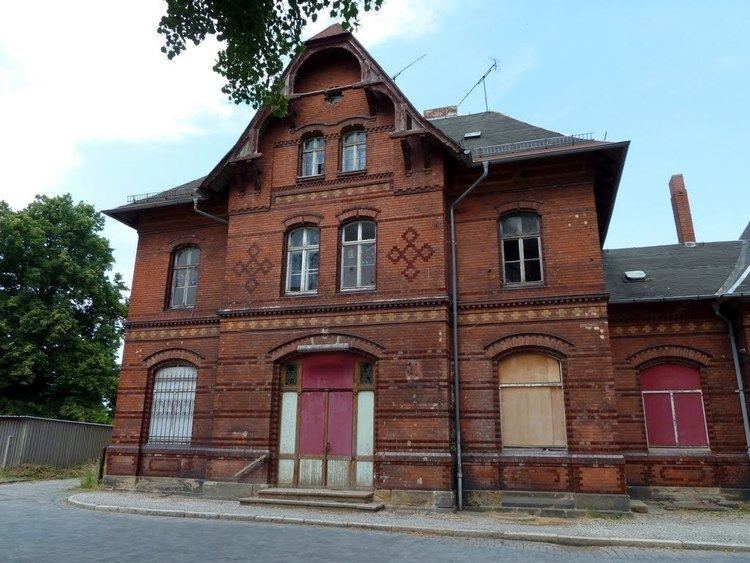Country Germany Postal codes 06493 Local time Wednesday 2:03 AM | Time zone CET/CEST (UTC+1/+2) Dialling codes 039483 Population 8,058 (31 Dec 2008) | |
 | ||
Weather 3°C, Wind SW at 23 km/h, 79% Humidity Points of interest Schloss und Park Ballenstedt, Selke, Gegensteine, Filmmuseum Schloss Ballenstedt, Heimatmuseum | ||
Ballenstedt is a town in the Harz district, in the German state of Saxony-Anhalt.
Contents
- Map of Ballenstedt Germany
- Geography
- History
- Politics
- Places of interest
- Transportation
- Born in Ballenstedt
- Died in Ballenstedt
- Twin towns
- References
Map of Ballenstedt, Germany
Geography
It is situated at the northern rim of the Harz mountain range, about 10 km (6 mi) southeast of Quedlinburg. The municipal area comprises the villages of Asmusstedt, Badeborn, Opperode, Radisleben, and Rieder. Ballenstedt ist a stop on the scenic Romanesque Road.
History
The Saxon count Esico of Ballenstedt (~1000-1059/60) was mentioned in a 1030 entry in the medieval chronicles of the Annalista Saxo and in a 1036 deed issued by Emperor Conrad II. He was a son of one Count Adalbert, who held the office of a Vogt of Nienburg Abbey, and Hidda, a daughter of Margrave Odo I of the Saxon Ostmark. Esico, whose sister Uta married Margrave Eckard II of Meissen is considered the progenitor of the House of Ascania. He had a collegiate church erected in Ballenstedt, dedicated to Saints Pancras and Abundius, in the presence of Emperor Henry III in 1046.
Ballenstedt itself was not mentioned before 1073, when King Henry IV of Germany certified the donation of the estates by Esico's son Count Adalbert II to Nienburg Abbey. In 1123 Adalbert's son Otto the Rich together with his son Albert the Bear, who would become the first ruler of Brandenburg, established a Benedictine monastery at the site. Albert and was buried at the crypt of the abbey church in 1070; a monument for him is located in the town's park. Albert's grandson Henry I became the first Prince of Anhalt in 1218.
In 1512 the Ballenstedt citizens were vested with brewing rights by the Ascanian prince Wolfgang of Anhalt-Köthen. After Wolfgang met with Martin Luther at the 1521 Diet of Worms, he became one of the first Protestant rulers in the Holy Roman Empire. Ballenstedt Abbey was stormed and plundered during the German Peasants' War, whereafter Prince Wolfgang had the monastery secularised in 1525. He chose Ballenstedt as a residence and granted it town privileges in 1543. It received city walls in 1551; a town hall was first mentioned in 1582. As the Anhalt princes supported King Christian IV of Denmark during the Thirty Years' War, Ballenstedt was raided and plundered by Imperial troops under Albrecht von Wallenstein in 1626.
After the war, the town and the former monastery were rebuilt as a Baroque summer residence by the Ascanian princes of Anhalt-Bernburg. In 1765 the enlightened prince Frederick Albert completely moved his residence from Bernburg to Ballenstedt Castle and induced a time of prosperity, including the erection of a castle theatre in 1788, the oldest theatre in Saxony-Anhalt and the domain of composers like Albert Lortzing and Franz Liszt.
A part of the re-unified Duchy of Anhalt from 1863 on, Ballenstedt became known as a residential town for the well-to-do retired like Princess Friederike of Schleswig-Holstein-Sonderburg-Glücksburg, who died at Ballenstedt Castle in 1902, or the painter and author Wilhelm von Kügelgen, whose house is now a museum.
Politics
Seats in the municipal assembly (Stadtrat) as of 2004 elections:
The coat of arms is derived from the insignia of the Counts of Ballenstedt, which is also the origin of the coat of arms of Saxony. It was first manifested in 1560 after Ballenstedt received town rights.
Places of interest
Transportation
Ballenstedt is located at the Bundesstraße (federal highway) 185, leading to the Bundesstraße 6 and the Bundesautobahn 14. Train service was suspended in 2003. A small asphalt runway is about 5 km (3 mi) outside the town.
